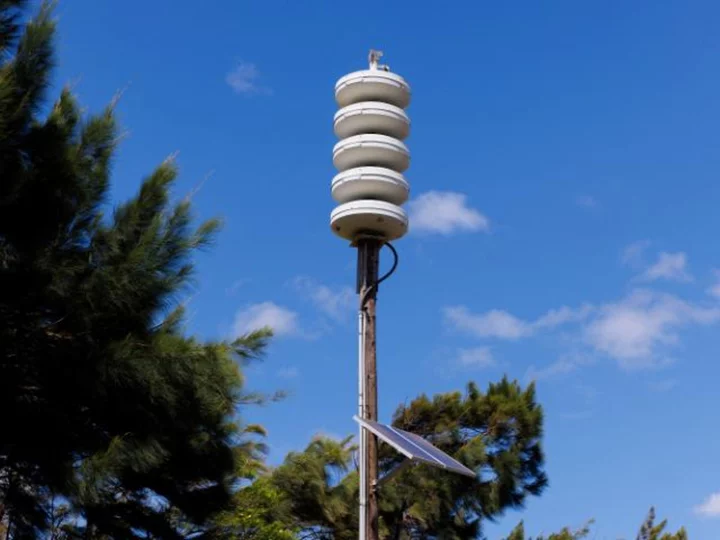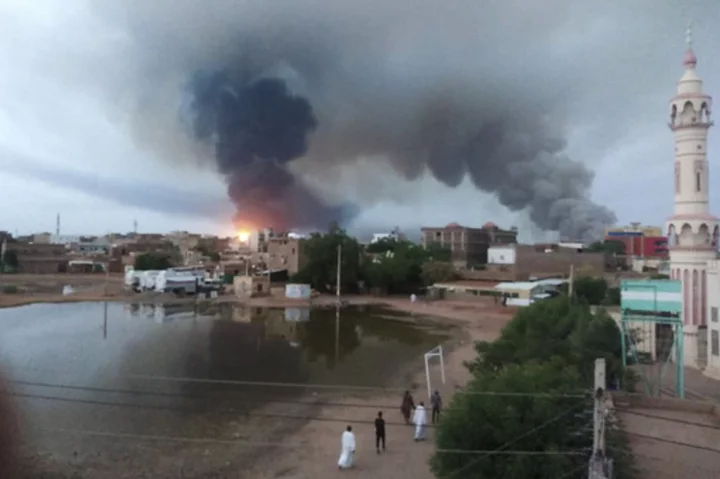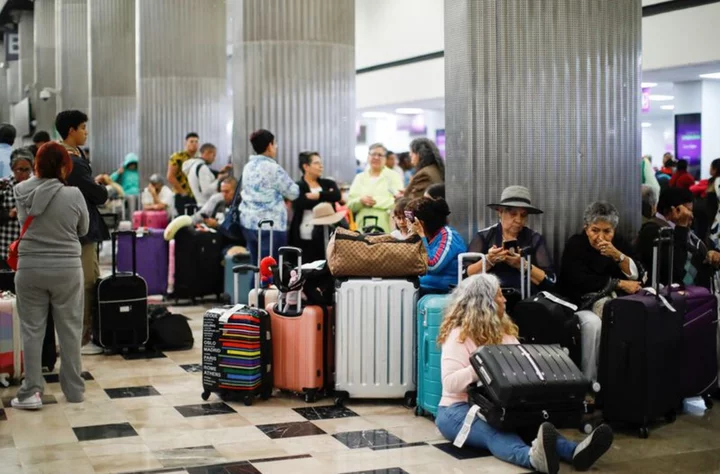Authorities face mounting questions about whether more could have been done to warn residents as wildfires devastated western Maui earlier this month, after Hawaii's siren warning system stayed silent while wildfires reduced the town of Lahaina to ashes.
The statewide system, made up of more than 400 emergency sirens dotted across the Aloha State, is said to be the largest integrated emergency siren network in the world, alerting residents to natural disasters like tsunamis or wildfires or man-made threats. It includes 80 alarms in Maui County, many in and around Lahaina, according to a county website.
But the sirens did not sound as wind-fueled wildfires spread on August 8, sending residents fleeing. The blaze in Lahaina claimed dozens of lives, perhaps leaving as many as 1,000 people unaccounted for, according to authorities. In the days since, officials have offered several explanations amid growing frustration: The sirens were broken. They weren't activated. They would have sent people into danger and not away from it.
"The questions that folks have been asking about the alerts and so on are definitely top of mind for so many here," Cindy McMillan, a spokesperson for Hawaii's Joint Information Center, told CNN This Morning Thursday. Island officials are still actively responding to the disaster, she said, but the governor has asked the attorney general to conduct a "comprehensive review" of the incident that would include the failure of the sirens to sound.
"So we don't have answers to your questions yet. We do expect the attorney general will get them, but at this point, we can't say," McMillan said.
Meanwhile, here's what we know about Hawaii's all-hazard outdoor siren system.
Shifting narratives about sirens' silence
It remains unclear exactly why the system didn't work as intended.
In interviews with CNN, Gov. Josh Green has said the sirens were broken. Some were "essentially immobilized" as a result of the extreme heat, he said Monday. In a subsequent interview Tuesday, Green said "some" of the sirens were "broken," indicating the state was investigating the issue and acknowledging the sirens could have alerted people more quickly.
A spokesperson for the Hawaii Emergency Management Agency said last week the sirens were never activated. A February 2022 plan by the agency says the sirens are "primarily activated" by county officials but can also be activated by the state.
"Nobody at the state and nobody at the county attempted to activate those sirens based on our records," said spokesperson Adam Weintraub, adding it was "largely a function of how fast the flames were moving." Officials used other communication methods, like cell phone alerts, to warn residents, he said.
Asked Wednesday if he regretted not sounding the alarms, Maui Emergency Management Agency Administrator Herman Andaya said, "I do not," telling reporters the sirens are mainly used for tsunami warnings.
"The public is trained to seek higher ground in the event that the siren is sounded," he said. "Had we sounded the siren that night, we're afraid that people would have gone mauka," meaning inland, or toward the mountainside. "And if that was the case, then they would have gone into the fire."
Green echoed that later in the news conference. When he first moved to Hawaii, he said, people told him, "If you hear a siren, it's a tsunami and go to high ground." Based on his own experience, he would have expected a tsunami if he'd heard a siren, he said at Wednesday's news conference.
Asked Wednesday about his earlier statement the sirens were broken, Green told CNN's Wolf Blitzer, "These sirens have been aging over decades. Some have received maintenance. We are waiting to see what others had available to them. But intermittently, some were broken and we're doing a full assessment."
Sirens signal natural disasters and potential threats
Indeed, the system is meant to send residents to high ground in the event of a tsunami, according to the county website, mauisirens.com. That site includes a map showing many of the alarms in Maui County are situated along the coastline.
But the sirens can be used to warn of any number of threats, per the site, which explicitly names wildfires. They can also alert residents to hurricanes, flooding, volcanic eruptions and even man-made threats like a terrorist attack or "hazardous materials incidents."
"We rely on that emergency alert system to keep us safe from a number of things. You think tsunami, you think other types of emergencies like wildfires," Rep. Jill Tokuda told CNN Saturday. "That should have been our first line of defense."
Two different types of tones distinguish between natural disasters and an attack. A "steady three-minute siren tone" signals the former, and residents are told to "evacuate low-lying areas near the coastline, tune your radio or television to any local station and listen" for further instructions. A "wailing three-minute siren tone" signals an attack, per the website, which says people should get inside and monitor the radio and TV.
The sirens sound at about 120 decibels -- a loud rock concert is about 110 decibels, per the US Centers for Disease Control and Prevention -- with a range or radius of about 3,400 feet, though that may change depending on the environment.
Monthly tests ensure sirens are working
The sirens are tested once a month, with a 60-second tone sounding on the first state workday of each month, according to mauisirens.com, encouraging volunteers to listen and report results.
"Growing up here in Hawaii, anyone who lives here, every single month the very first day at noon we hear the warning sirens go off as a test," said Rep. Tokuda. "And if you don't hear them in your neighborhoods, you know that something's wrong with them and so they get fixed."
Indeed, the sirens were tested on August 1, a week prior to the fire, according to the state emergency management agency. During the test, one observer heard a Maui siren sound for less than the expected one-minute duration, the agency said on X, formerly known as Twitter. But a second test was successful, the agency said, and it was analyzing data to check for errors.
Officials point to other communication methods
The sirens are just one part of the wider statewide system that also incorporates the Emergency Alert System, or EAS, which uses radio or television broadcasts, and Wireless Emergency Alerts, or WEA, that are sent to mobile phones. Both were used in lieu of the sirens, Andaya said Wednesday.
How effective those other communication methods were is unclear. As the fires spread, many residents lost power and cell phone service.
"Unfortunately these days the alerts come on our cell phones," Tokuda said. "But we also know that there was no cell phone coverage."
The mobile alerts did reach some residents.
Though already effectively evacuated, Bryan Aguiran was at work several miles away in Kaanapali when he said he received an emergency alert telling Lahaina residents to flee.
But one resident who received the alert on his phone called it "useless." Cole Millington, who lives in Lahaina, previously told CNN he was already evacuating in his truck when he got the alert on his phone.
"We have tsunami warnings that I think should have been utilized," he said, adding many residents "felt like we had absolutely no warning."









